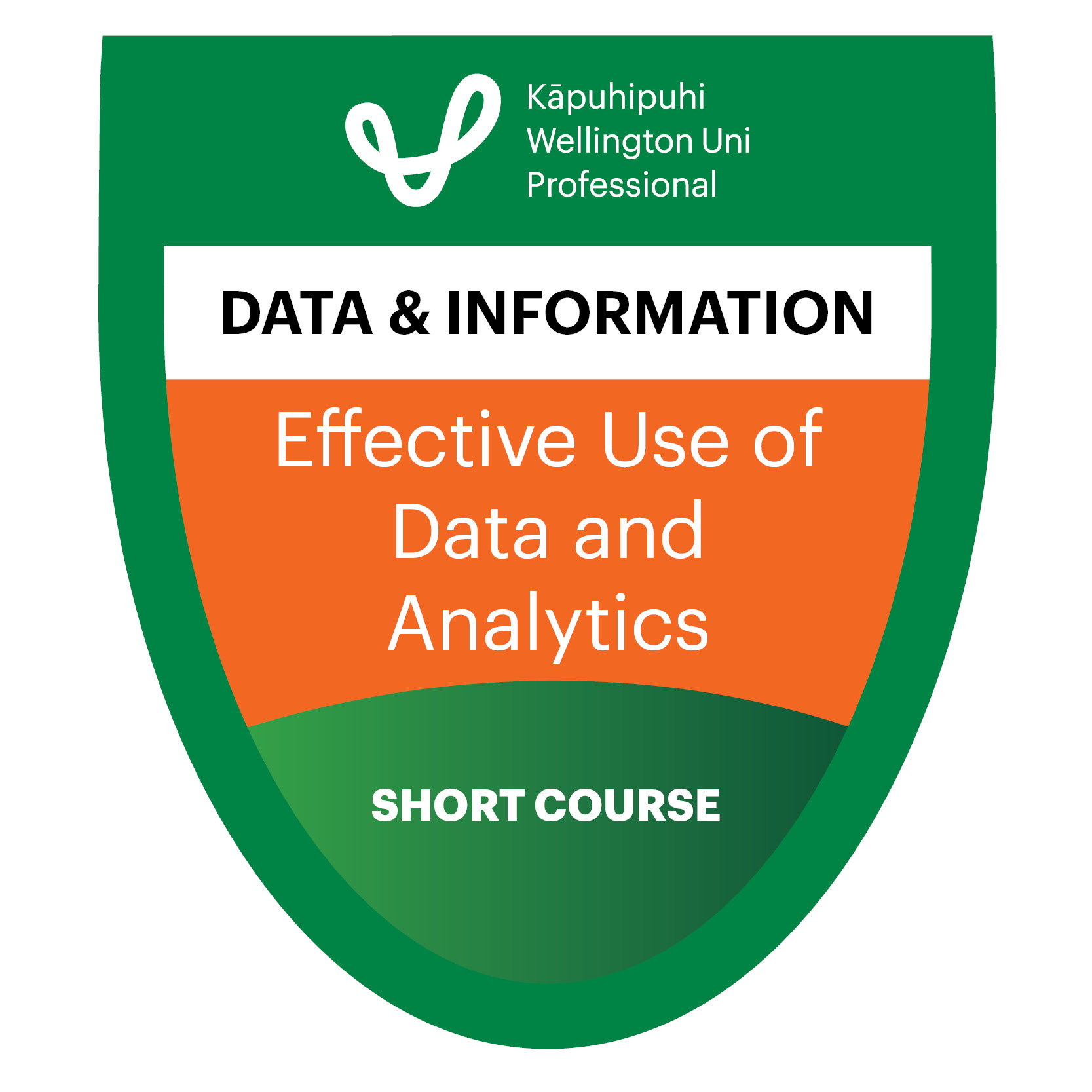Effective Use of Data and Analytics for Organisations
Build confidence using data effectively to inform decisions and to communicate analytical results.

Course overview
This course strengthens participants’ ability to use data effectively within an organisational context, whether primarily as consumers of data outputs or as contributors to their creation. It explores how data and analytics can support informed decision-making, while addressing legal, ethical, and cultural factors that influence appropriate data use.
Participants are introduced to widely used analytical techniques and engage in practical exercises using Excel, with no prior experience in statistics required. The course also includes discussion on selecting suitable techniques for various scenarios and applying them to real-world problems.
A design-led approach to communicating analytical insights is emphasised, with guidance on developing effective visualisations such as dashboards and infographics. Participants gain practical tips for editing and improving data communication tools to ensure clarity and impact.
The course suits anyone who wants to help their organisation use data more effectively while also ensuring that use is legal, ethical, and culturally responsible.
By the end of the course, participants will be more confident in applying the right analytical methods, understanding the limits and responsibilities of data use, and communicating insights clearly through visualisations and dashboards.

What you'll learn
- Understand how data and analytics can enhance human decision-making in organisational contexts.
- Recognise how legal, ethical, cultural, and organisational factors shape appropriate data use.
- Identify different types of data and prepare them effectively for analysis.
- Implement basic analytical techniques in Excel to explore and interpret data.
- Apply common analytical approaches to real organisational use cases.
- Develop audience-specific strategies for communicating analytical results clearly and effectively.
- Use data visualisations to support understanding and influence decision-making.
- Explore how emerging technologies, such as AI, are changing the landscape of data analytics.
Course modules
Session 1: How Data and Analytics Enhance Decision Making
Participants will learn how data and analytics can drive better human decision-making in organisations, focusing on the impact of informed decision-making at all levels.
Session 2: Organisational, Legal, Ethical, and Cultural Considerations
This session covers the legal, ethical, and cultural factors that shape how data and analytics should be used in organisations, ensuring responsible and effective data practices.
Session 3: Types of Data and Data Preparation
Participants will explore the different types of data and learn best practices for preparing data for analysis, including structuring and cleaning data to ensure accuracy.
Session 4: Using Excel to Answer Questions about a Single Variable
In this hands-on session, participants will engage with basic analytical techniques using Excel, learning key tools such as pivot tables and formulas.
Session 5: Using Excel to Answer Questions about Differences between Groups and Variables
Building on the previous session, participants will deepen their understanding of analytical techniques and apply them to real-world datasets, refining their skills in data analysis.
Session 6: Using Excel to make Predictions
Participants will learn to use Excel to understand associations between variables and to make predictions, such as forecasts.
Session 7: Tailoring Analytical Results for Different Audiences
Participants will learn how to effectively communicate analytical results by tailoring the approach to meet the needs and objectives of different audiences, ensuring clarity and impact.
Session 8: Hands-on Data Visualisation and Communication
This session focuses on hands-on learning in data visualisation, enabling participants to create clear, impactful visuals that communicate insights effectively to various stakeholders.
Further Information
Format
This course is delivered fully online through a combination of live Zoom sessions and self-paced learning activities. Live sessions are interactive, combining presentations, group discussion, and practical exercises. You’ll have access to an online learning platform for readings, activities, and resources. Group size is limited to ensure active participation.
What You'll Receive
You will receive a digital certificate of attendance and a Wellington Uni-Professional digital badge. These include the Continuing Professional Development (CPD) hours completed, making them suitable for recognition by professional organisations and employers.

Upcoming Courses & Delivery Options
04 Jun 2026 | Online
Duration: 8 x 90 mins sessions
$NZD 1,295
excl. GST
05 Nov 2026 | Online
Duration: 8 x 90 mins sessions
$NZD 1,295
excl. GST
Can’t make these dates or want a private course?






